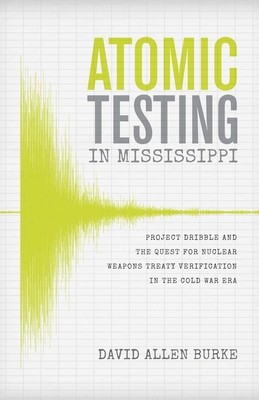
- We will send in 10–14 business days.
- Author: David Allen Burke
- Publisher: LSU Press
- ISBN-10: 0807184438
- ISBN-13: 9780807184431
- Format: 14 x 21.6 x 1.3 cm, minkšti viršeliai
- Language: English
- SAVE -10% with code: EXTRA
Reviews
Description
In Atomic Testing in Mississippi, David Allen Burke illuminates the nearly forgotten history of America's only nuclear detonations east of the Mississippi River. The atomic tests, conducted in the mid-1960s nearly 3,000 feet below ground in Mississippi's Tatum Salt Dome, posed a potential risk for those living within 150 miles of the site, which included residents of Hattiesburg, Jackson, Gulfport, Biloxi, Mobile, and New Orleans. While the detonations provided the United States with verification methods that helped limit the world's nuclear arsenals, they sparked widespread public concern.
In 1964 and 1966 the Atomic Energy Commission conducted experiments at the salt dome--code-named Dribble--surrounded by a greater population density than any other test site in the United States. Although the detonations were not weapons tests, they fostered a conflict between regional politicians interested in government-funded science projects and a population leery of nuclear testing near their homes. Even today, residents near the salt dome are still fearful of long-term negative health consequences. Despite its controversy, Project Dribble provided the technology needed to detect and assess the performance of distant underground atomic explosions and thus verify international weapons treaty compliance. This technology led to advanced seismological systems that now provide tsunami warnings and detect atomic activity in other nuclear nations, such as Pakistan and North Korea.EXTRA 10 % discount with code: EXTRA
The promotion ends in 23d.13:05:16
The discount code is valid when purchasing from 10 €. Discounts do not stack.
- Author: David Allen Burke
- Publisher: LSU Press
- ISBN-10: 0807184438
- ISBN-13: 9780807184431
- Format: 14 x 21.6 x 1.3 cm, minkšti viršeliai
- Language: English English
In Atomic Testing in Mississippi, David Allen Burke illuminates the nearly forgotten history of America's only nuclear detonations east of the Mississippi River. The atomic tests, conducted in the mid-1960s nearly 3,000 feet below ground in Mississippi's Tatum Salt Dome, posed a potential risk for those living within 150 miles of the site, which included residents of Hattiesburg, Jackson, Gulfport, Biloxi, Mobile, and New Orleans. While the detonations provided the United States with verification methods that helped limit the world's nuclear arsenals, they sparked widespread public concern.
In 1964 and 1966 the Atomic Energy Commission conducted experiments at the salt dome--code-named Dribble--surrounded by a greater population density than any other test site in the United States. Although the detonations were not weapons tests, they fostered a conflict between regional politicians interested in government-funded science projects and a population leery of nuclear testing near their homes. Even today, residents near the salt dome are still fearful of long-term negative health consequences. Despite its controversy, Project Dribble provided the technology needed to detect and assess the performance of distant underground atomic explosions and thus verify international weapons treaty compliance. This technology led to advanced seismological systems that now provide tsunami warnings and detect atomic activity in other nuclear nations, such as Pakistan and North Korea.

Reviews